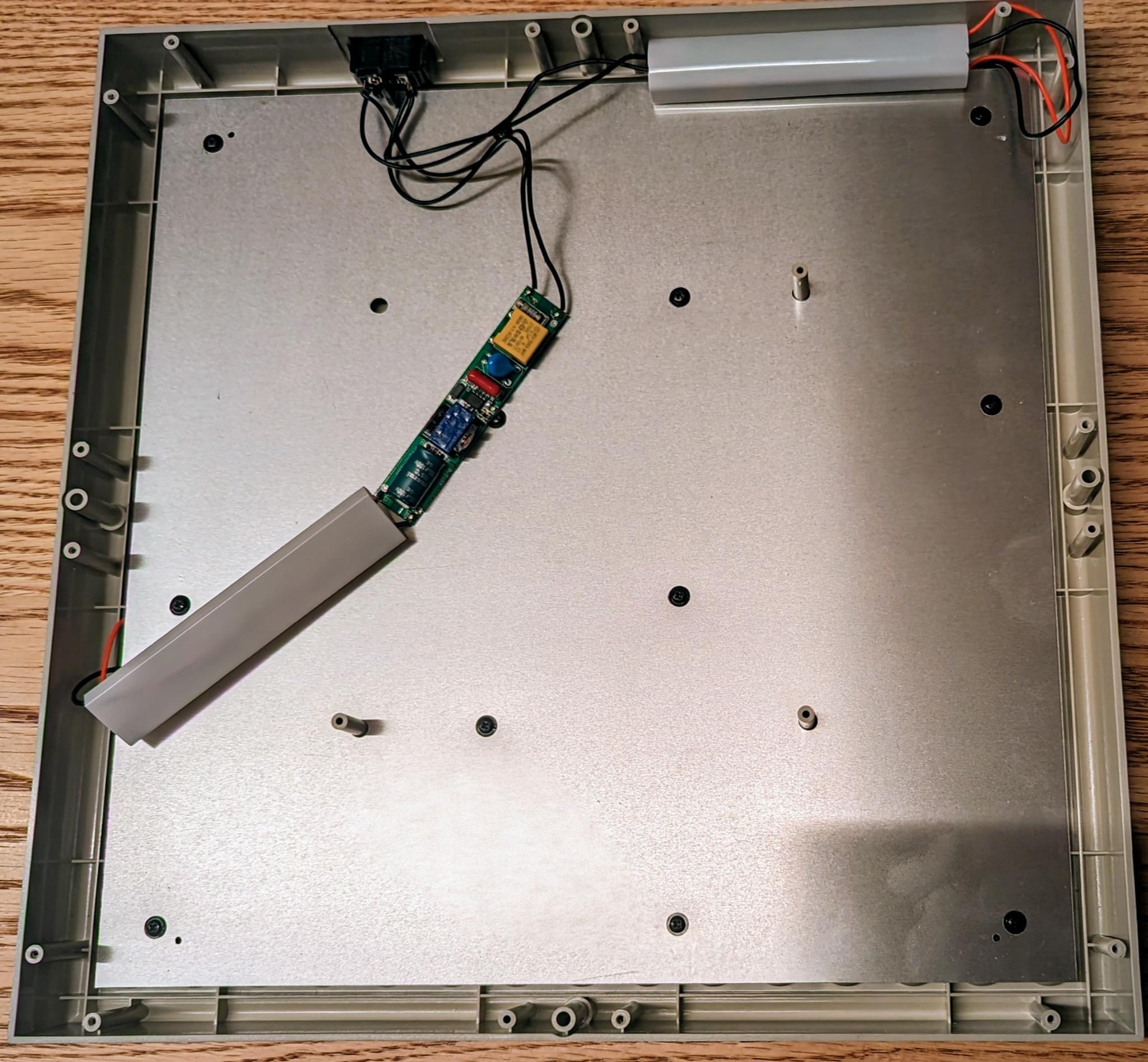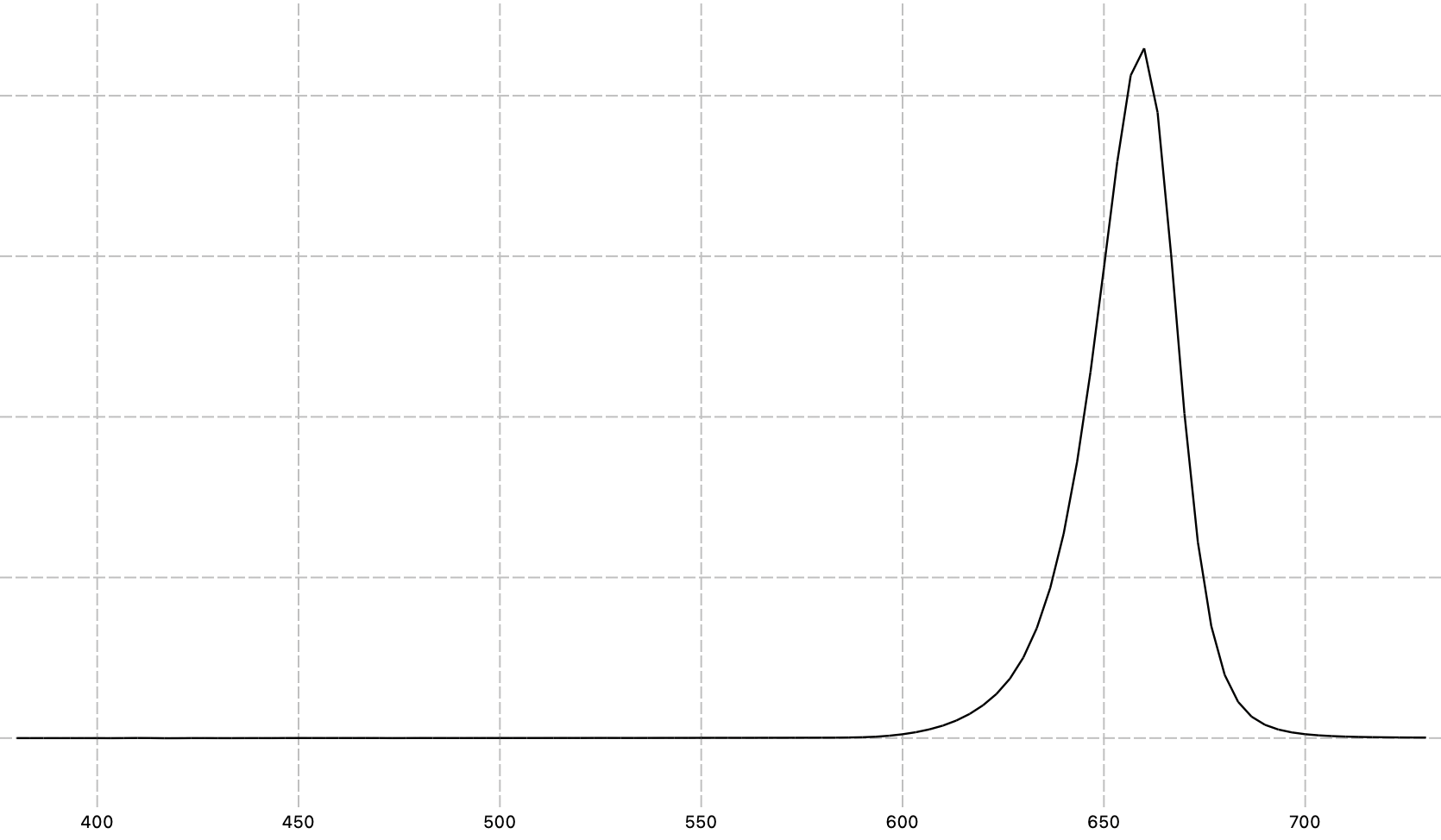I have some difficulties analysing the result of each intervention. I am not sure that Red and NIR light helps, but I think it does.
Just as a general FYI, I also bought a 45W panel on amazon but I measured it at using 24.8W of electric power which is basically half the advertised power. Assuming an optimistic efficiency of 40% that would be around 10W of optical power. The panel is 30x30cm so that’s 11mW/cm2 which is almost 10 times less than the 100mW/cm2 advertised and often used in studies.
BTW Here is the panel: https://www.amazon.com/gp/product/B0BF62V79K
What,/which instrument did you use to measure the power output?
Basic Information Photobiomodulation
@cl-user perhaps 45W is the electrical power draw from the device and not the radiative output at 660nm + 850nm? (I assume this is required safety information for electrical code?)
From another thread in this forum:
The device description used in the post (a bulb, with a heat sink attached) says 98mW/cm2 at 6” measured with a solar power meter. They also have a spectra of the supposed light wavelengths’ relative intensities, but this could have been copied and pasted from another source.
I’m going with that solar power meters incorrectly over measure the light intensity by 2x, and that’s the discrepancy we keep seeing. I’ve read this before, but I’m not sure why this would have mattered, unless the spectra is bs and there is more wavelengths of light being emitted than shown in the spectra. Or that the other meters being used are ignoring one of the two wavelengths.
In these panels is it possible to turn off one wavelength LED array and just emit the single wavelength LEDs remaining? — if so, then someone with a meter can measure them separately and confirm if this is or is not the case, even with a solar meter (ideally both types of meters).
Here’s a post from @juandraw from another thread (fasting?) which suggests a mechanism for red light therapy in flies for longevity:
I like to have my info organized, and there’s so much good stuff on this site I can’t remember where I read something that pertains to this specific topic; I apologize for the double-posting.
I think he measured the draw.
That was from Curious, not me. I quoted the article he posted.
@Ericross2 It’s the electrical power drawn which is at 24.8W instead of 45W.
@Joseph I measured it with a power meter.
That said even if it was 45W of electric power that would still be around 18W of light power so 20mW/cm2 for a 30cmx30cm panel at a distance of 0.
If I have some time this evening I will use a spectrophotometer to measure the light spectrum and output power.
BTW It’s probably not a real issue it’s just that if you want the get energy used in the studies it takes more time.
I did a tear down of that panel. There are two 48.2V supplies with a 0.2432A current output going directly to the LEDs. That’s 23.44W total so we can expect around 10mW/cm2 at a zero distance.
Below is the light spectrum using a spectrophotometer. I had it at a distance of 27.5" as it was saturating when closer. The max is at 660nm and the flux at that distance is 0.58mW/cm2.
BTW this is only the red part of it and the IR part should be similar so we are probably around 1.2mW/cm2 total.
Those panels are much weaker than advertised. (10x here)
That’s tremendous work, @cl-user . Thank you for doing this.
Yes, the panel is weaker than advertised. However, on the “bright” side, the tightness of the wavelength is a positive. So with more panels or more time you can get whatever dose you’d like.
Which device would you recommend for neck / décolleté?
Is there a value to throw a switch in for each wavelength in the panel (at each 48V power supply) i.e. be able to turn on/off 660nm separately from 850nm?
I have this one from DGYAO that I put on my chest.
https://www.amazon.com/DGQY-Infrared-Therapy-Muscles-Wearable/dp/B09WD52BJD/ref=sr_1_2_sspa
DGYAO also makes one for the neck, which I have. However, it only covers the back of the neck. The device above can be used for the neck, just place it over the front of the neck and chest.
You can’t put a switch to choose IR or red as the LED are all in series: Red, IR, red, IR, etc.
Looking at that link it’s difficult to find the information but it seems that it’s using 13W of electrical power for a 12x20" area which would be around 3.4mW/cm2. That’s rather low. A total energy of 5J will need around 25min of continuous light (50min in pulsed mode).
BTW it’s amusing to see those photos of people using that over black clothes.
The light intensity is 50mW/cm2.
I think that can be safely considered to be a marketing hyperbole from the vendor.
50mW/cm2 of optical power on a 20x12" panel would be around 190W on electric power an that would get extremely hot.
If you look at the teardown of a 45W (advertised) panel I posted some time ago in that thread the optical output was around 10mW/cm2 while the vendor says it’s 100mW/cm2.
You can just look at the power rating of the AC adapter to get an idea of the maximum possible power.
I have two panels from platinumled together they measure 6 feet by 12 inches.
630, 660 and NIR wavelengths 810 830 and 850. The newer ones have an additional blue light. On mine you can either use red light, near infrared or both.
I stand about 8-10 inches away and slowly turn for twenty minutes. Usually 4-5 times a week

